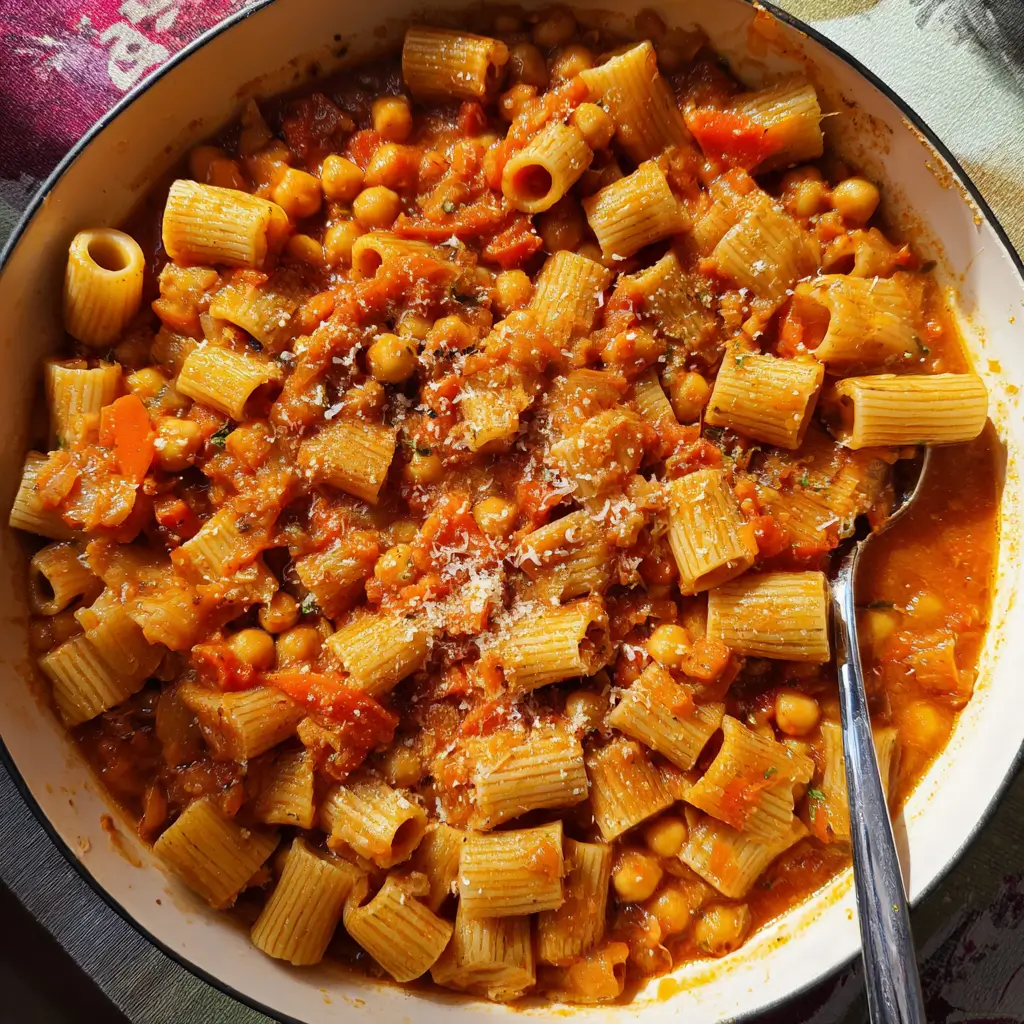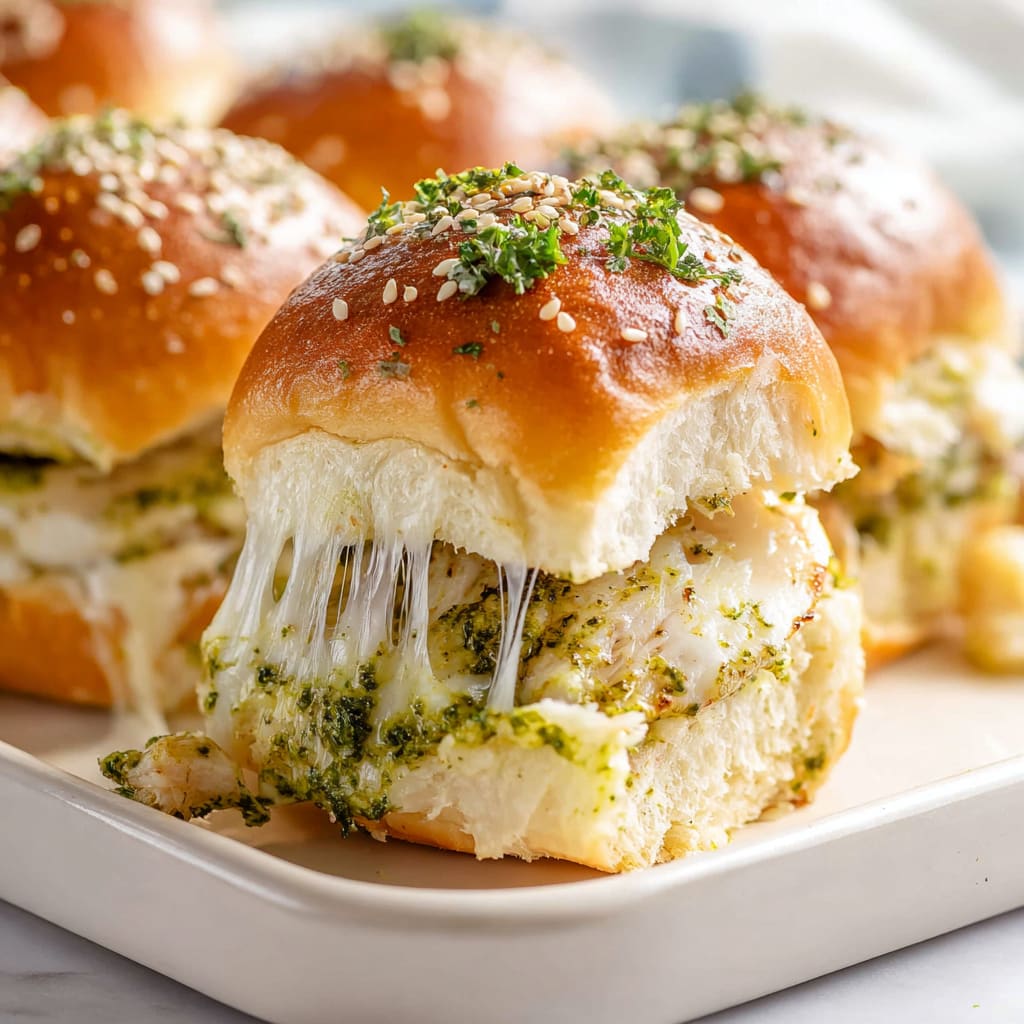Warm, comforting, and utterly soul-satisfying, Pasta e Ceci brings together the humble elegance of chickpeas and pasta in a rich, aromatic broth that speaks directly to the heart. This traditional Italian soup-like dish transforms simple pantry staples into a hearty meal that’s both rustic and refined. The velvety texture of chickpeas against tender pasta creates a perfect harmony that has sustained generations of Italian families. You’ll learn how to create this classic comfort food with just a handful of ingredients while mastering techniques that bring authentic Italian flavors to your kitchen.
Why You’ll Love This Recipe
Pasta e Ceci is the ultimate comfort food that strikes the perfect balance between convenience and flavor. This one-pot wonder comes together in about 30 minutes, making it ideal for busy weeknights when you crave something substantial but don’t have hours to spend in the kitchen. The textural contrast between the al dente pasta and creamy chickpeas creates a satisfying mouthfeel that keeps you coming back for another spoonful.
What truly sets this dish apart is its remarkable depth of flavor despite its simplicity. The foundation of garlic, rosemary, and tomato creates a rich base that permeates both the pasta and chickpeas. There’s also something magical about how the starchy pasta water combines with the chickpeas to create a naturally creamy consistency without adding cream.
This recipe is also incredibly economical and sustainable, relying primarily on pantry staples. It’s the kind of dish that proves luxury isn’t about expensive ingredients but about knowing how to transform simple components into something extraordinary.
Ingredients
For this classic Pasta e Ceci recipe, you’ll need:
- 1 cup (200g) dried chickpeas, soaked overnight (or 2 15-oz cans, drained and rinsed)
- 8 oz (225g) short pasta (ditalini, small shells, or broken spaghetti work well)
- 3 tablespoons extra virgin olive oil, plus extra for drizzling
- 3 cloves garlic, finely minced
- 1 sprig fresh rosemary (or 1 teaspoon dried)
- ¼ teaspoon red pepper flakes (optional)
- 1 tablespoon tomato paste
- 2 tablespoons concentrated tomato puree
- 4 cups (950ml) vegetable broth (or chicken broth for non-vegetarians)
- 1 Parmesan rind (optional but highly recommended)
- Salt and freshly ground black pepper, to taste
- Fresh parsley, chopped, for garnish
- Grated Parmesan cheese, for serving
The Parmesan rind is a traditional addition that infuses the broth with a deep umami flavor, while good quality olive oil is essential for the authentic Italian character of chickpea pasta soup.
Pro Tips
Master the pasta cooking technique: Unlike traditional pasta dishes, Pasta e Ceci requires cooking the pasta directly in the broth. This method allows the pasta to release its starch into the soup, naturally thickening it to create that signature creamy consistency. Cook the pasta just until al dente (about 2 minutes less than package instructions) since it will continue to absorb liquid as it sits.
Achieve the perfect texture: Traditional Pasta e Ceci can range from soup-like to stew-like consistency. For a creamier texture, mash about one-third of the chickpeas before adding them to the pot. This simple step creates a luxurious mouthfeel without adding any cream or butter, staying true to the rustic Italian preparation.
Develop depth of flavor: The foundation of exceptional Italian cooking lies in building flavor gradually. Start by creating a flavorful soffritto with olive oil, garlic, and rosemary over low heat until fragrant but not browned. This process, known as “sweating” the aromatics, releases their essential oils and creates a flavor base that permeates the entire dish. Let the tomato paste cook for 1-2 minutes until it darkens slightly, which concentrates its flavor and removes any metallic taste.
Instructions
Step 1: Prepare the Chickpeas
If using dried chickpeas, drain after soaking overnight and place in a large pot. Cover with fresh water, bring to a boil, then reduce heat and simmer for about 1 hour or until tender. If using canned chickpeas, simply drain and rinse them well under cold water to remove excess sodium and starch.
Step 2: Create the Flavor Base
In a large, heavy-bottomed pot, heat the olive oil over medium-low heat. Add the minced garlic, rosemary sprig, and red pepper flakes (if using). Cook gently for 2-3 minutes until the garlic becomes fragrant but doesn’t brown. This gentle cooking infuses the oil with these aromatic flavors.
Step 3: Build the Soup
Add the tomato paste to the aromatic oil and cook for about 1-2 minutes, stirring constantly until it darkens slightly and becomes fragrant. This step caramelizes the sugars in the tomato paste, adding depth. Pour in the tomato puree and stir to combine.
Step 4: Add Chickpeas and Broth
Add the cooked or canned chickpeas to the pot. If you prefer a creamier texture, remove about a third of the chickpeas and mash them with a fork before returning them to the pot. Pour in the vegetable broth and add the Parmesan rind if using. Bring the mixture to a gentle simmer and let it cook for about 10 minutes to allow the flavors to meld.
Step 5: Cook the Pasta
Add the pasta directly to the simmering broth. Stir occasionally to prevent sticking and cook until the pasta is al dente, usually 8-10 minutes depending on the shape. The pasta will absorb some of the liquid and release starch, naturally thickening the soup.
Step 6: Finish and Serve
Remove the rosemary sprig and Parmesan rind. Taste and adjust the seasoning with salt and pepper as needed. If the soup is too thick, add a splash more broth; if too thin, simmer a few minutes longer. Ladle the Pasta e Ceci into warmed bowls, drizzle with extra virgin olive oil, sprinkle with chopped parsley and grated Parmesan, and serve immediately with crusty bread.
Variations
Tuscan-Style Pasta e Ceci: For an authentic Tuscan variation, add 2 cups of chopped kale or Swiss chard during the last 5 minutes of cooking. The slight bitterness of the greens beautifully complements the creaminess of the chickpea pasta soup. Enhance the earthy flavors with a teaspoon of fresh thyme along with the rosemary.
Pasta e Ceci con Pancetta: For a more indulgent version, start by rendering 2 ounces of diced pancetta or bacon in the pot before adding the olive oil and aromatics. The rendered fat and crispy bits of cured pork add incredible depth and a pleasant saltiness to the finished dish. This variation is particularly popular in central Italian regions.
Sicilian-Inspired Variation: Create a Sicilian twist by adding 1 teaspoon of fennel seeds to the aromatics and finishing the dish with toasted breadcrumbs mixed with lemon zest. This regional adaptation adds interesting textural contrast and bright citrus notes that cut through the richness of the chickpea broth.
Storage and Serving
Pasta e Ceci actually improves with time as the flavors continue to develop, making it perfect for meal prep. Store leftovers in an airtight container in the refrigerator for up to 3 days. Note that the pasta will continue to absorb liquid as it sits, so when reheating, you may need to add a splash of water or broth to achieve your desired consistency. Gently warm over medium-low heat, stirring occasionally to prevent sticking.
For serving, pair this hearty chickpea and pasta dish with a simple arugula salad dressed with lemon juice and olive oil to cut through the richness. The peppery greens provide a pleasant contrast to the earthy flavors of the main dish. Alternatively, serve with crusty Italian bread for sopping up every last bit of the flavorful broth.
For a complete Italian meal, serve smaller portions of Pasta e Ceci as a primo piatto (first course), followed by a simple protein like roasted fish or grilled chicken with seasonal vegetables. Don’t forget a generous drizzle of your best extra virgin olive oil just before serving—this final touch elevates the entire dish.
FAQs
Can I use any type of pasta for Pasta e Ceci?
Traditionally, small shapes like ditalini, tubetti, or broken spaghetti work best as they cook evenly and integrate well with the chickpeas. However, you can use any short pasta you have on hand. Avoid long pasta shapes as they’re harder to eat in this dish.
Is Pasta e Ceci supposed to be soupy or thick?
The consistency varies by region and personal preference. In Rome, it tends to be more soup-like, while in Tuscany, it’s often thicker. Adjust the amount of broth to achieve your preferred consistency, and remember that the dish will continue to thicken as it sits.
Can I make Pasta e Ceci vegan?
Absolutely! Simply omit the Parmesan rind and cheese garnish. The dish is naturally hearty and flavorful even without these dairy components. For added umami, consider adding a tablespoon of nutritional yeast.
Why is my Pasta e Ceci too thick/thin?
Pasta continues to absorb liquid even after cooking. If it’s too thick, add more broth. If too thin, simmer uncovered longer or mash some chickpeas to thicken it naturally.
Can I freeze Pasta e Ceci?
Yes, but freeze it without the pasta. Cook and freeze the chickpea base, then add freshly cooked pasta when reheating. This prevents the pasta from becoming mushy during the freezing and reheating process.
Conclusion
This Pasta e Ceci is comfort food at its finest — a beautiful marriage of humble ingredients transformed into something greater than the sum of its parts. It’s the kind of dish that connects you to generations of Italian home cooks who understood that true culinary magic often happens with the simplest ingredients. Whether you’re seeking a quick weeknight dinner or a soul-warming meal on a chilly evening, this chickpea and pasta dish delivers both nourishment and pleasure in every spoonful. With just one pot and a handful of pantry staples, you’ve created something that honors centuries of Italian culinary wisdom — proving once again that the most memorable meals don’t require elaborate techniques or exotic ingredients, just attention to detail and a touch of love.
Print
Pasta e Ceci
Description
Forget fussy recipes – this rustic Italian Pasta e Ceci delivers maximum comfort with minimal effort. Creamy chickpeas and tender pasta in one pot? Weeknight dinner perfection.
Ingredients
- 1 cup (200g) dried chickpeas, soaked overnight (or 2 15-oz cans, drained and rinsed)
- 8 oz (225g) short pasta (ditalini, small shells, or broken spaghetti)
- 3 tablespoons extra virgin olive oil, plus extra for drizzling
- 3 cloves garlic, finely minced
- 1 sprig fresh rosemary (or 1 teaspoon dried)
- ¼ teaspoon red pepper flakes (optional)
- 1 tablespoon tomato paste
- 2 tablespoons concentrated tomato puree
- 4 cups (950ml) vegetable broth (or chicken broth for non-vegetarians)
- 1 Parmesan rind (optional but recommended)
- Salt and freshly ground black pepper, to taste
- Fresh parsley, chopped, for garnish
- Grated Parmesan cheese, for serving
Instructions
- If using dried chickpeas, drain after soaking and simmer in fresh water for about 1 hour until tender. For canned chickpeas, drain and rinse well.
- Heat olive oil in a large pot over medium-low heat. Add garlic, rosemary, and red pepper flakes. Cook gently for 2-3 minutes until fragrant.
- Add tomato paste and cook for 1-2 minutes until slightly darkened. Stir in tomato puree.
- Add chickpeas to the pot. For creamier texture, mash about one-third before adding. Pour in broth and add Parmesan rind if using. Simmer for 10 minutes.
- Add pasta directly to the simmering broth. Cook until al dente, about 8-10 minutes, stirring occasionally.
- Remove rosemary sprig and Parmesan rind. Season with salt and pepper to taste.
- Ladle into bowls, drizzle with olive oil, and top with parsley and grated Parmesan. Serve immediately with crusty bread.








